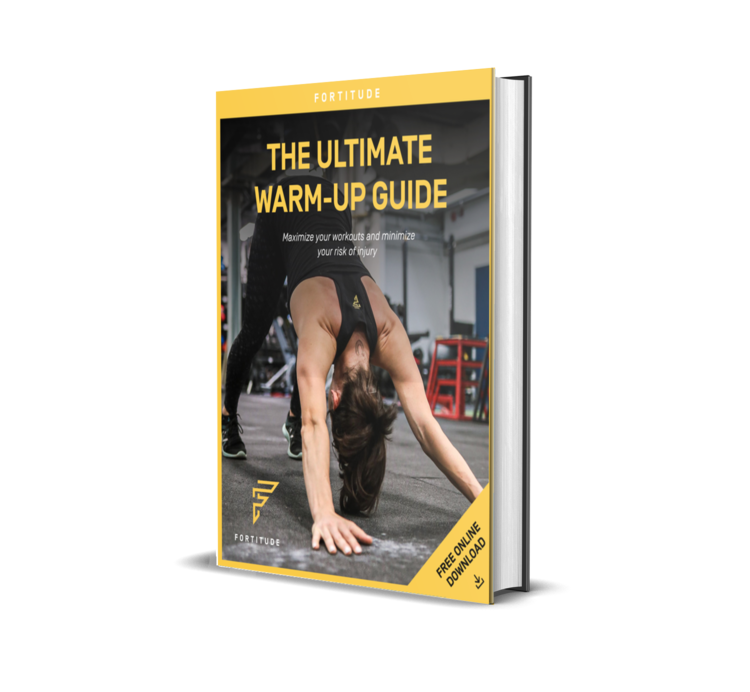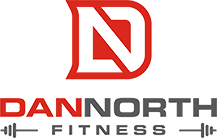For many of you reading, configuring your own at-home workouts can seem like an overly daunting task. Where do you even start?
It’s kind of like cooking.
Most of us will do what’s comfortable and familiar, seldomly stepping out of uncharted territory. When we find a recipe we’re confident with, we tend to stick to it.
But what happens when we get bored of eating the same thing day in and day out?
You scramble the internet, frantically looking for easy-to-follow recipes until you come across something that seems relatively manageable and simple enough to execute.
You might do something similar when looking for the best workout. Whether it’s scrolling through Instagram, searching Google, or dusting off one of your Hip Hop Abs DVD’s…the list of possibilities is endless and can be overwhelming.
Now, there’s nothing inherently wrong with this approach. To the contrary, it shows a lot of dedication and commitment. But as with anything, there’s usually a better way to do it.
The issues with this randomized approach of scouring the internet to find workouts include:
- Lack of direction: Think of your workout plan as a map, guiding you from point A to point B. With no plan, you have no direction. With no direction, you have little to no results to show for all your hard work.
- Lack of consistency: The biggest missing ingredient in most people’s workout regime is consistency. We live in a world where fast solutions are so readily available, and quick fixes have become standard vocabulary. Most of us would have accomplished the goals we set for ourselves if we focused less on quick fixes, and more on practicing our habits consistently.
- Lack of personal attention: The random workout you find on IG and the 3-min ab routine you see on YouTube have something in common…they both have no idea who you are. This is important to note because:
- You may have current or pre-existing injuries
- The workout may be outside of your current level of fitness
- It may contradict your previous and future workouts
So, how do you maximize your at-home workouts and get the absolute most out of them?
There are a few simple, but highly effective strategies you can use.
1. Have (at least somewhat of) a plan
It doesn’t need to be anything crazy. It doesn’t need to be anything overly intense. But having at least somewhat of an idea of what your workouts will entail propels you forward immensely.
2. Always warm-up
This is one of those “non-negotiables”. Think about wintertime (which should be easy if you live in Toronto). You throw on your boots and jacket and make your way to your car. What do you do before you start driving? You put the keys in and let the engine warm-up. This principle applies directly to your body. In order to be able to perform intensive exercise, you need to prepare your body for it.
I know it can be a pain in the ass warming up but doing something is always better than doing nothing.
Click the pic below for The Ultimate Warm-Up Guide. Over 50 pages of routines and information to maximize your workouts and minimize your risk of injury.
3. Always cool down and recover
Another non-negotiable. It’s easy to finish your workout and head straight to the shower (hopefully that’s one of your post-workout habits). But neglecting the recovery portion of your workout sets you back a step or two. At the end of each workout, try at least a few min of simple stretches and breathing to help the body relax and recover sufficiently.
Exercise is literally the process of breaking your muscles down. When you exercise, you are damaging your muscle tissue. You only get to see the benefit of working out when you allow your body to recover. Sleep, stretch, eat, relax and recover.
4. Use full body, compound movement
Whether your goal is to get stronger, lose some fat, or build muscle…implementing compound exercises (movements that involve multiple joints working together) into your workouts is one of the most effective ways to reach your fitness goals.
A healthy dose of compound movements, especially with little to no access to equipment at home, will effectively help you:
- Burn more calories per workout
- Get stronger
- Strengthen your supportive joints and ligaments
5. Use one-sided exercises for core engagement
In addition to performing compound exercises, using one-sided (aka unilateral) movements come with their ongoing benefits. An example of a unilateral exercise would be a lunge, or a side plank.
Why should you be doing one-sided exercises?
- They help correct your imbalances
- They strengthen your core
- They improve your overall balance and coordination
6. Focus on quality of movement, not how much you’re sweating
One of the biggest misconceptions in the fitness world is how much you’re sweating is an indication of how effective your workout was.
This is simply not true.
Yes, your core body temperature will and should increase during your workout. But how much you sweat? That doesn’t mean much. How much you sweat can be attributed to other factors such as how much water you’re retaining in your body and your sodium levels (to name a couple).
Rather than putting so much emphasis on breaking a sweat, try emphasizing high quality movement with proper technique. By doing so, you’ll effectively be increasing the challenge of the workout and will, in turn, elevate your core body temperature.
7. Do something that is sustainable
Long term consistency will always beat out short term intensity. When first starting a workout program, you might have high hopes and ambitions. You might say to yourself, “I’m going to work out every single day! Twice a day!”.
Ok, great. But how long can you sustain this schedule for? A few days? A couple weeks?
When deciding what kind of workout plan you want to get into, first ask yourself, “How often can I realistically set aside time to exercise?”. And be honest with yourself! Keep in mind, you can always add another day into the mix once you get into the swing of things.
A year of working out 3 times a week for 45 min will always be more effective than working out every day for two weeks, stopping for a few months, and repeating the cycle.
Long term consistency > short term intensity.
In summary…
- Have (at least somewhat of) a plan.
- Always warm-up before every workout.
- Always cool down and recover after every workout.
- Sleep, stretching, and optimal nutrition have the highest ROI in terms of recovery.
- Use compound exercises.
- Use one-sided exercises.
- Emphasize high quality movement over how much you’re sweating.
- Do something that is sustainable.
- Have fun!






